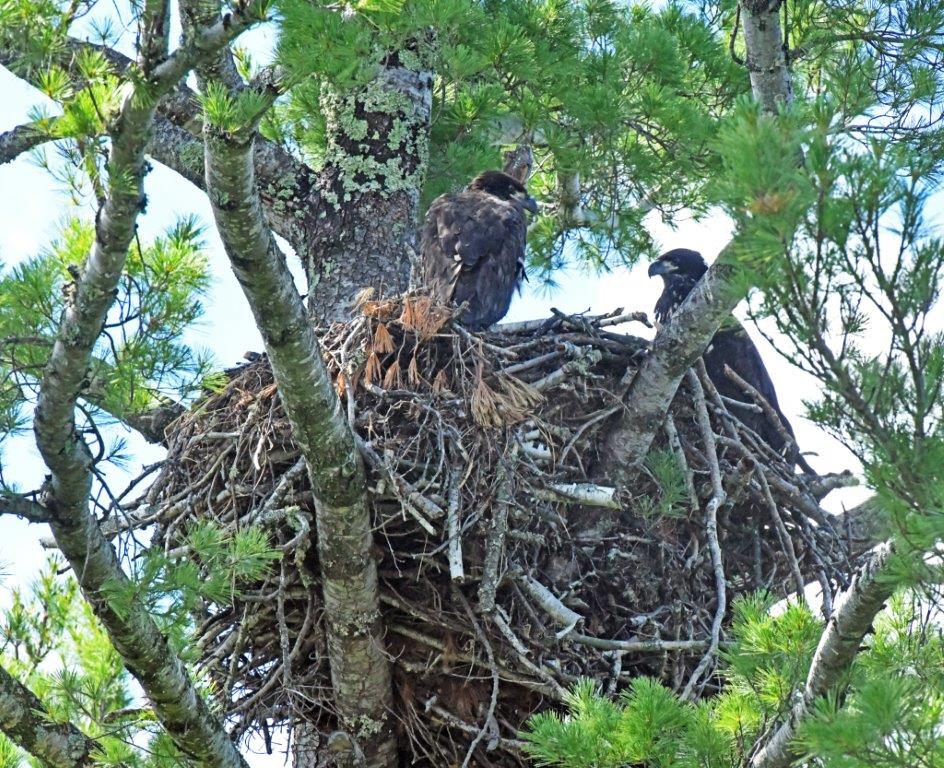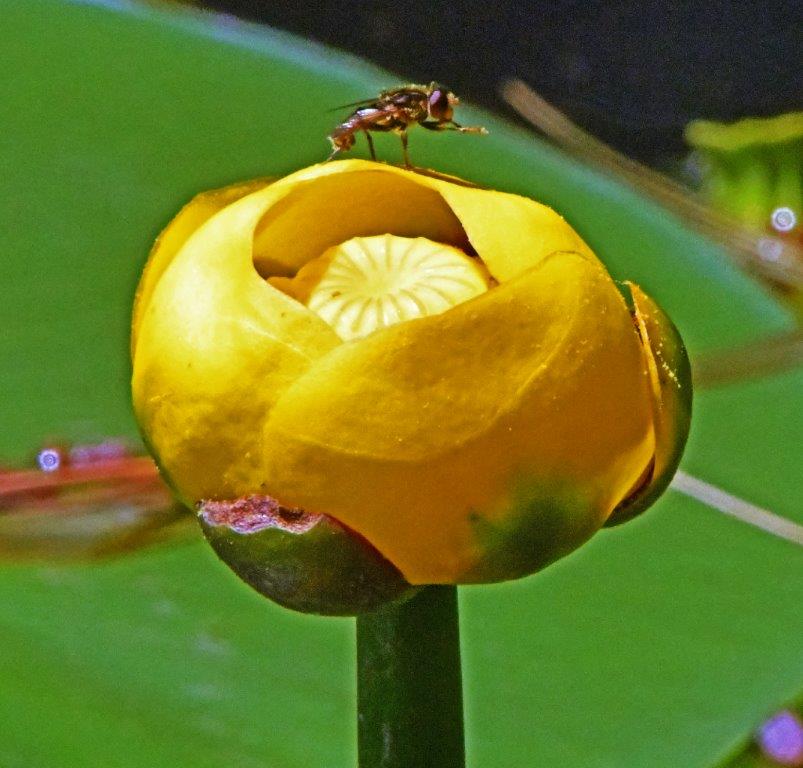Daily Updates
Drought, Bear Food, Bears, and a Beautiful Day - UPDATE July 7, 2020
07 July 2020
Print Email
Despite an inch and a half of rain the last couple days, we are still 47% below normal for rainfall this year. We wondered why we have been seeing so many bears. We checked foods in the woods. Juneberry and chokecherry crops, two favorites, have failed. Blueberries are patchy.yearling male Bramble
yearling male, Bramble

If the rain we?ve seen the last couple days continues at normal levels, blueberries could still have a crop as they continue to blossom. Pincherries might also provide some help.Loon w chick
Loon with chick

Berries that ripen later (like dogwoods) could still come through. Hopefully wild sarsaparilla berries will, too. They are the big favorite in the last week of July and the first week of August.
A big plus for August is that hazelnuts, the big favorite of all, looks to be developing a good crop.
It is for times like this that this community has been feeding bears for so long (since 1961). In years of scarce wild food when communities elsewhere have bears going house to house for bird seed and garbage, this community hardly knows there is a problem. Bears here go to their regular feeding sites instead of house to house.
Bald eaglets
Bald eaglets

Loon feeding chick
Loon feeding chick

Loon w chicks
Loon with chicks

On this good day with a good group, it was adventure time?a trip to a rock den that has probably housed bears for millennia was accompanied by learning to spot bear sign. We got calls that sent us rushing to put on masks and jump in the 10-passenger, air-conditioned van and see mothers with cubs.
We also did a pontoon ride to see Lily and Hope?s den and an eagle?s nest that has two nearly full size young that will be flying soon.
Common Merganser family
Common Merganser family

We also checked on the local loon pair that has its first young since 2017. Donna and I saw the pair a couple weeks ago on June 21 with their two newly hatched chicks. The chicks were riding on the back of what we presumed to be the mother. It is impossible to tell the adults apart except by voice. One chick was under a wing and the other was visible on top of the other wing. Today, we saw how much the two have grown in 16 days. We quietly watched as the mother kept the chicks close by her for protection from eagles and other predators while the male brought fish after fish to the hungry chicks. They are accustomed to people, and they ignored us sitting quietly in the pontoon boat watching them in action. The many fish that the male brought helped us understand the chick?s fast growth. At one point, the mother checked the sky, and its red eye caught the sun while one of the chicks was in the frame showing how big it had become. Another time, the family was near the shore in different light, making the water pretty in a different way.
White water lily
White water lily

Yellow water lily
Yellow water lily

Along the way, we saw a family of common mergansers and blooming white and yellow water lilies.
The temperature was perfect. No wind. A sunny day with a blue sky. It couldn?t have been better.
Thank you for all you do.
Lynn Rogers, Biologist, Wildlife Research Institute and North American Bear Center

 Author
Topic: Jewel and her cubs (Read 2447098 times)
Author
Topic: Jewel and her cubs (Read 2447098 times)
